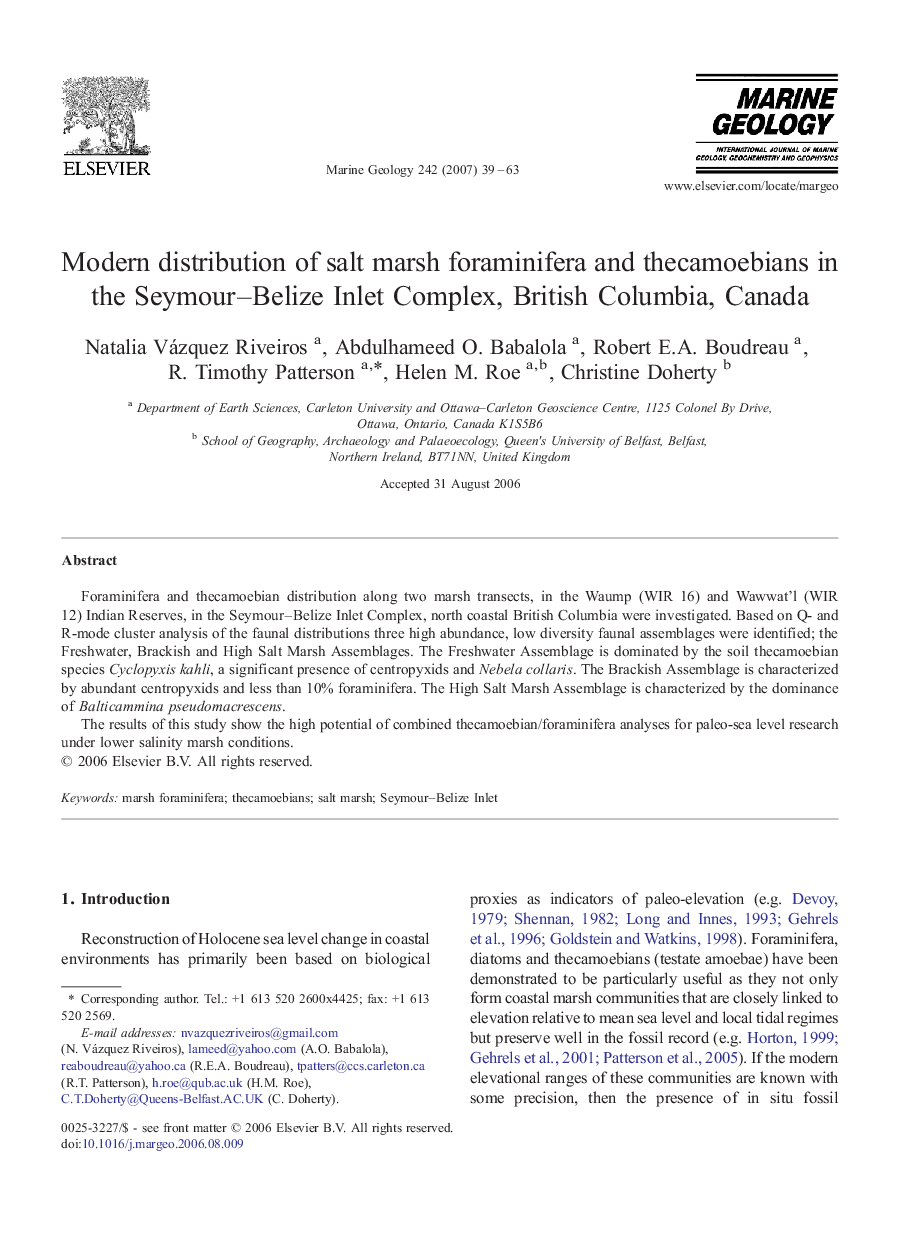| Article ID | Journal | Published Year | Pages | File Type |
|---|---|---|---|---|
| 4719564 | Marine Geology | 2007 | 25 Pages |
Foraminifera and thecamoebian distribution along two marsh transects, in the Waump (WIR 16) and Wawwat'l (WIR 12) Indian Reserves, in the Seymour–Belize Inlet Complex, north coastal British Columbia were investigated. Based on Q- and R-mode cluster analysis of the faunal distributions three high abundance, low diversity faunal assemblages were identified; the Freshwater, Brackish and High Salt Marsh Assemblages. The Freshwater Assemblage is dominated by the soil thecamoebian species Cyclopyxis kahli, a significant presence of centropyxids and Nebela collaris. The Brackish Assemblage is characterized by abundant centropyxids and less than 10% foraminifera. The High Salt Marsh Assemblage is characterized by the dominance of Balticammina pseudomacrescens.The results of this study show the high potential of combined thecamoebian/foraminifera analyses for paleo-sea level research under lower salinity marsh conditions.
